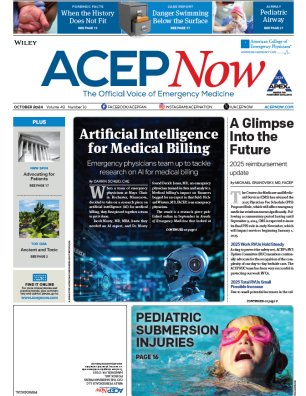Self-expanding transcatheter aortic valve replacement (TAVR) is associated with better survival and other cardiac parameters compared with surgical AVR (SAVR) in intermediate-risk patients with severe aortic stenosis, researchers report.
Dr. Michael Reardon of the Houston Methodist DeBakey Heart and Vascular Center in Texas told Reuters Health by email that TAVR “has grown at an explosive rate in the US and globally, largely driven by data such as the randomized US Partner A and CoreValve Pivotal High Risk trials.”
Partner A showed equivalent survival between TAVR and SAVR, he noted, and the CoreValve pivotal trial showed superior survival for TAVR over SAVR.
“With this data, TAVR is well accepted as a treatment option in high-risk patients,” Dr. Reardon said.
“The commercial use of TAVR in the US is recorded in the (STS/ACC) TVT registry and we have seen a steady decrease in the Society of Thoracic Surgeons Predicted Risk of Mortality (STS PROM)” scores in patients undergoing the procedure, he continued. “The question then arises, is TAVR in a lower STS PROM population still reasonable?”
To address that question, Dr. Reardon and colleagues conducted a retrospective subgroup analysis of the prospective, randomized CoreValve US Pivotal High-risk Trial, which had compared self-expanding TAVR to SAVR in patients with severe aortic stenosis who were at increased surgical risk based on their STS PROM score and other factors.
In the current analysis, all patients had an STS PROM score of 7% or less (“intermediate risk”); 202 underwent TAVR implantation and 181 underwent SAVR.
As reported online August 17 in JAMA Cardiology, at two years, all-cause mortality was 15.0% with TAVR and 26.3% with SAVR. The two-year rate of stroke was 11.3% for TAVR versus 15.1% for SAVR.
Both groups had “significant and equivalent increases” in quality of life at two years compared with baseline, with a summary score on the Kansas City Cardiomyopathy Questionnaire of 20.0 for TAVR and 18.6 for SAVR.
The medical benefit at two years, defined as alive with a summary score of at least 60 and a less than 10-point decrease from baseline, was similar between the groups, with a benefit in 51% of those who underwent TAVR compared with 44.4% of those who underwent SAVR.
Dr. Reardon said the current study “gives the practicing physician, the Food and Drug Administration and industry information that TAVR is likely being used in a reasonable way and the diffusion of TAVR is following a safe and reasonable course.”
Pages: 1 2 | Single Page


No Responses to “TAVR Tied to Superior Survival Compared with SAVR in Intermediate-Risk Patients”